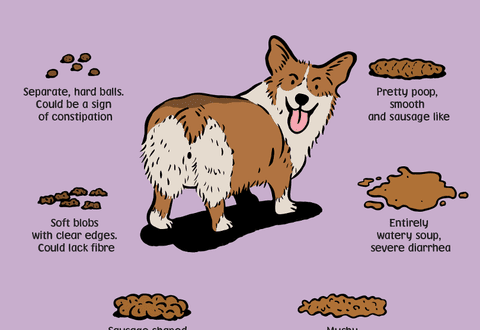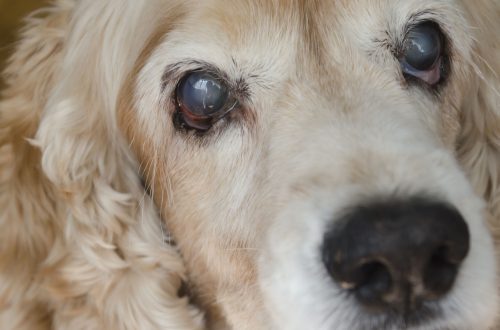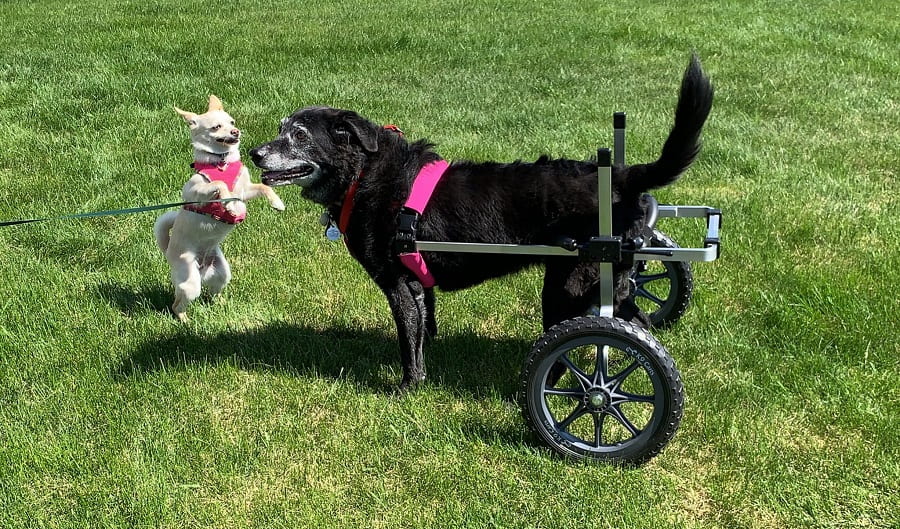
Why does a dog’s hind legs shake and what to do?
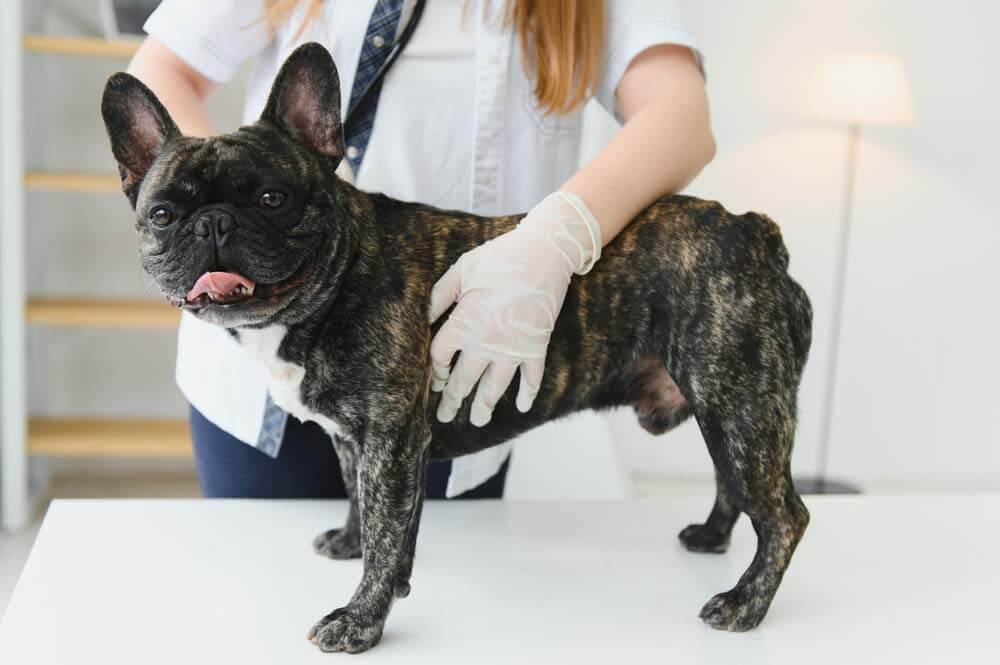
Contents
Causes of hind limb tremor in dogs
Consider why a dog’s hind legs tremble. For convenience, we divide the causes into physiological (safe) and pathological (dangerous).
They may look similar. The differentiation of the condition mainly depends on the context in which it arose and the accompanying symptoms. Diagnosis often requires not only a veterinarian and an examination, but also a laboratory.
Let’s start with non-dangerous reasons and smoothly move on to life-threatening ones.
Hypothermia
This is a drop in body temperature. Here we are talking about the fact that the dog is just cold and trembling. For example, she got caught in the rain or went out for a walk without her usual overalls in winter, or the window in the house was unusually wide open.
The fact is that when the skeletal muscles contract, work occurs in which heat is released. This heat remains almost completely inside the body, because a freezing dog, as a rule, lies in a ball and trembles. If she starts, for example, running, she will spend a lot of energy on warming up, and shivering allows her to warm up using a minimum of resources.
Hyperthermia
This is an increase in body temperature. With a rapid increase in body temperature (fever), you may notice that the dog’s hind legs are shaking.
Here we are talking about what people usually call chills. Chills are usually described by a person as a subjective sensation of coldness. This situation is accompanied by a spasm of skin vessels, the appearance of “goosebumps”, trembling caused by muscle contraction.
The center of thermoregulation is to blame for everything that happens, because it is he who is responsible for maintaining body temperature at a constant level.
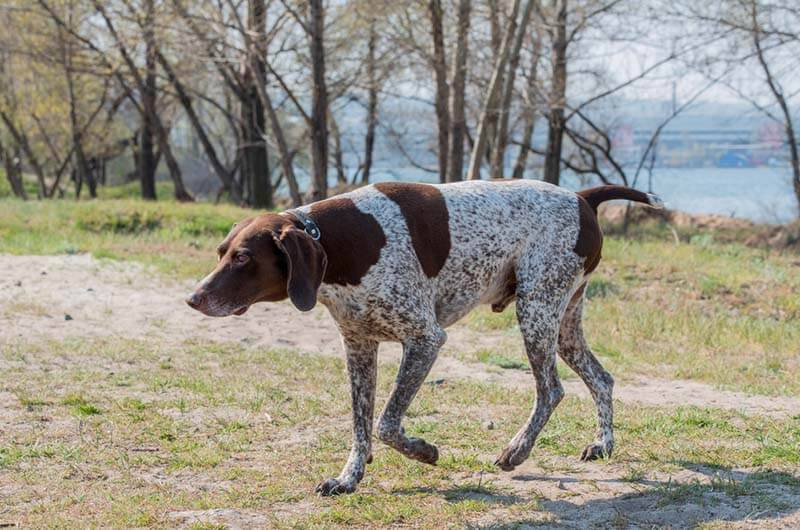
Muscle fatigue
Often occurs after an unusual long walk or swim. After active movement on stairs, mountains, unusual exercises. Often a change of ground causes such a reaction: for example, with a dog they always ran in the forest along a dirt path, but this time the run was carried out on asphalt or paving stones.
This situation, of course, can be a variant of the norm, but you should not provoke it. It is extremely important to be prudent about the load of your pets, because they themselves, having gone into a rage, do not control this moment at all. This is especially true for young, untrained animals with developed working instincts. For example, a shepherd dog, having first met sheep, may work to his own detriment.
Tremor of a stationary posture
After the animal remains in a forced position for a long time, the dog may begin to tremor the hind legs. For example, if she sits for a long time on command at a shutter speed or falls asleep in an uncomfortable position for a long time.
Such trembling is due to the fact that the blood flow in the affected limb slows down, metabolic products accumulate, and fresh “fuel” for the cells does not flow. A light massage will solve the problem.

Excitation
Extreme mental stress, sexual arousal, fear, any excessive strong emotion can provoke a tremor in the hind legs of a dog.
This reaction also proceeds as a chill and may affect the entire dog, its head, or only a couple of limbs. It is important to work with the pet on the ability to control oneself, self-soothing skills, and adapt to various stimuli in a timely manner. It is necessary not to overload the puppy’s psyche, never work with the dog “to failure”, do not let it go into a state of passion.
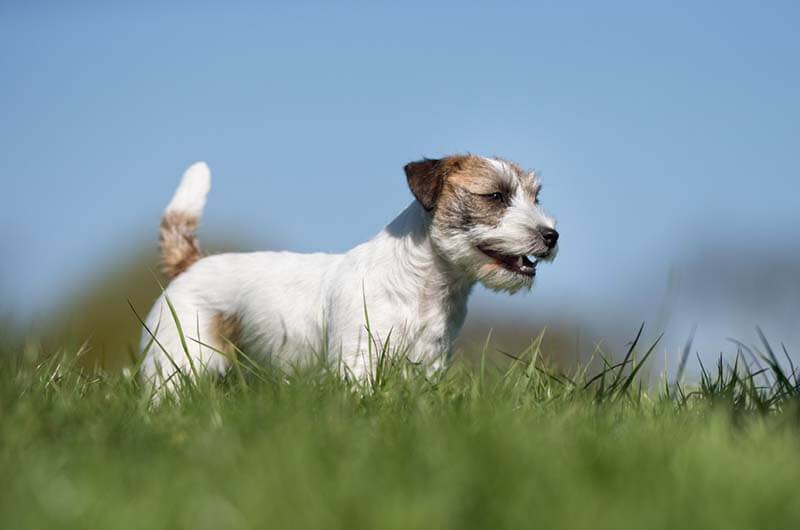
Inability to meet basic needs
If the dog really wants to go to the toilet, but defecation or urination is impossible (for example, the dog tolerates at home), then he can literally tremble with impatience.
This situation is very similar to the previous one and the next, but I want to highlight it especially, because many of our dogs are so clean that they endure until constipation forms, and regular abstinence from urination can lead to serious problems in the body. Try to organize an optimal walking regime for your pet, this is very important.
Pain
Any pain, whether it be problems in the abdomen, back, tail, caused by an injury, or pain caused by any other cause, can provoke trembling of the hind legs.
Here, too, we are talking about chills. In response to pain, blood vessels constrict, and a cascade of reactions occurs to keep the body in working condition, including providing heat to vital organs.
Pain in the legs caused by one or another orthopedic problem (the most common is hip dysplasia, anterior cruciate ligament tear, but there are many other problems) can also be the cause of tremor.
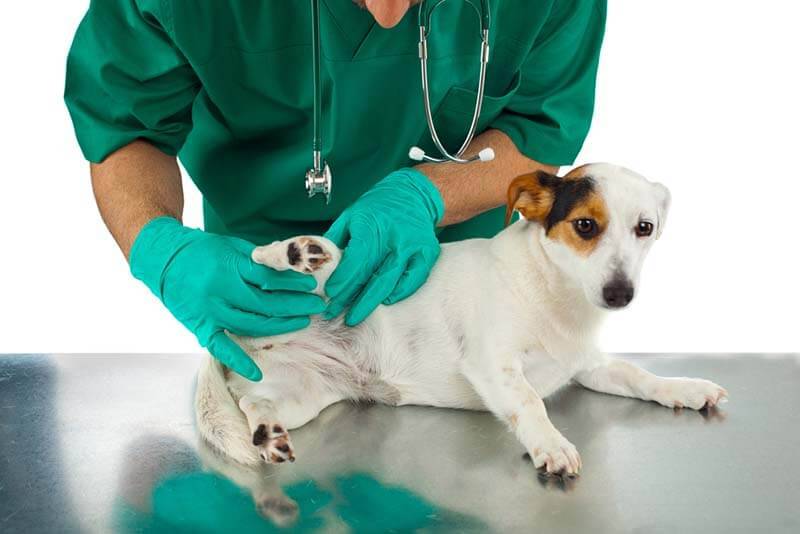
Itching
Dogs tolerate the condition when something itches, even more severely than when something hurts them (up to certain limits, of course). The constant desire to scratch oneself, especially if this desire cannot be realized, sometimes causes trembling in the hind legs of the dog.
In addition, a constant desire to scratch the back leg can be mistaken for trembling. The dog can constantly jerk it, not having a real opportunity to reach the source of the itch, the movement will remain incomplete.
Intoxication
This group includes a wide variety of diseases – from ordinary household poisoning to, for example, helminthic invasion – all health problems associated with either excessive intake of toxins or a slowdown in their excretion can cause trembling in the hind legs of a dog.
This may be trembling associated with disruption of the thermoregulation center in the brain, constant stimuli of the nervous system from the outside, or chills.
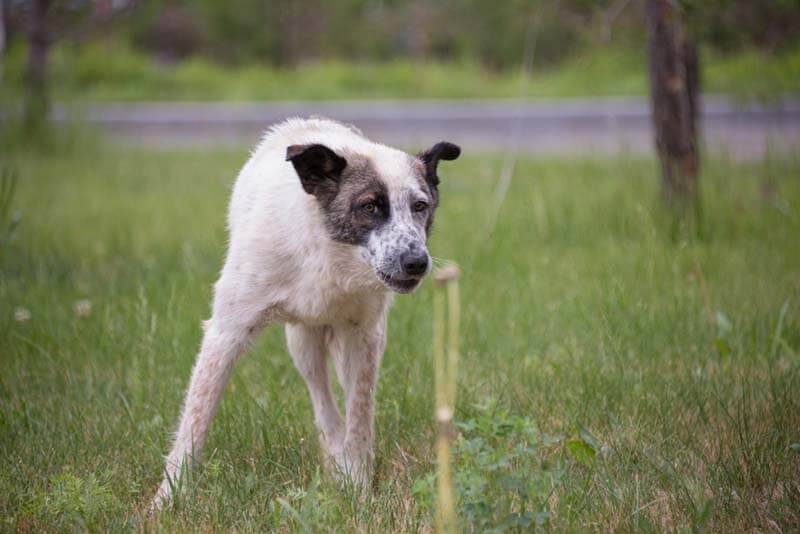
Neurological disorders
These include lesions of the cerebellum (neoplasms, injuries), hypomyelinogenesis – a decrease in myelin synthesis (the nerve sheath is made of it). It is found in Bernese Mountain Dogs, Tibetan Mastiffs and Rottweilers. Also, neurological problems can be a consequence of infections and intoxications. Lumbosacral syndrome (otherwise called radicular) is a complex of symptoms that occur due to compression or injury of the spinal column at the level of the lumbar.
Metabolic disorders
This is mainly about a significant decrease in the level of calcium and glucose in the blood.
A significant decrease in the level of calcium in the blood, as a rule, occurs in pregnant and lactating bitches, this is associated with a significant consumption of the substance and an unbalanced diet.
Unstable blood sugar levels are most often observed in puppies of small breed dogs (Spitz, Yorkshire Terriers), but a drop in sugar levels can also be observed in other dogs, for example, with diabetes, when therapy is selected, with hunger, exhaustion.
Инфекции
Canine distemper, rabies, some other infections can cause tremors. Rarely, but still, it can be assumed that only the hind legs will tremble in the dog at the very beginning of the disease or at some stage of it. More often, with an infection, tremor will occur in a complex of symptoms.
Tremor during infection can be caused by a rise or fall in body temperature (chills), pain, fear caused by a state of helplessness, or neurological processes caused directly by the disease. With rabies, the symptoms can be very varied, often the dog can be very agitated, and the most unexpected parts of her body may tremble.

Concomitant symptoms
It is unlikely that hind limb tremor will be the only symptom of any life-threatening condition. If only the hind legs are shaking, the dog is probably cold, agitated, wants to go to the toilet, or tired.
If, in addition to the fact that the dog’s hind legs are twitching, you see that it is hot, when measuring body temperature it turns out that it is 39 or higher, the shivering is probably related to temperature. Often these two symptoms together indicate pain or infection.
If the dog is reluctant to move, its legs tremble more after sleep, or, conversely, after a walk, then the problem is probably caused by the musculoskeletal system.
Trembling of the hind legs in dogs with low weight is usually associated with a drop in sugar and is accompanied by weakness, and possibly fainting. In pregnant and lactating females, a drop in blood calcium levels is often accompanied by anxiety, agitation, the dog may try to dig the bedding and hide.
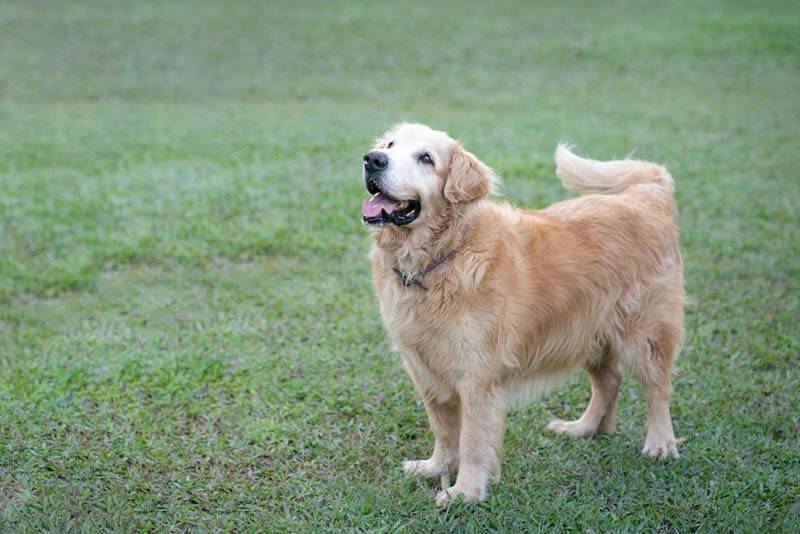
If the pet is shaking not only the hind limbs, but also the whole body or the coordination of movements is disturbed, the position of the body in space, the dog behaves strangely – unusually affectionate or, conversely, aggressive, tries to chew inedible objects or “pass through the wall”, walks in circles, then you should be concerned. These additional symptoms can occur with various neurological diseases (tumors, brain bruises), poisoning (intoxication), and may also indicate such a dangerous disease as rabies.
If you suspect that the dog has rabies, then do not touch it, remove people and animals as far as possible, contact the District State Animal Disease Control Station and follow the instructions of the specialists exactly.
Trembling of the hind limbs caused by lumbosacral syndrome may be accompanied by pain, weakness, and failure of the hind legs.
With an orthopedic problem, in addition to trembling, the dog, most often, will limp, possibly difficult movement after rest, or, conversely, after exercise.
Diagnostics
If the general condition is good, and the dog’s legs are trembling, then the owner makes the first, and sometimes the only, diagnosis himself on the spot.
How to do it? Close the basic needs of the animal one by one.
If the dog is wet – you need to dry it, place it in a warm room. Remember, if the dog is very cold, for example, fell into an ice hole, in no case should it be warmed up sharply – for example, with a hot bath. Place the dog in a warm room, cover, try to drink or feed warm if the dog is interested in this.
A dog that is very nervous should be calmed down, its attention should be switched to the usual irritant (food or play), a frightened pet sometimes needs to be taken out or taken out of a frightening place (for example, the dog’s hind legs often shake in the veterinarian’s office, and there is no longer a clinic in the yard ).
If for some reason the dog has been lying in one position for a long time, you can turn it over and give it a massage.
Take your dog for a walk, he may need to empty his bowels, he needs to urinate.
If you have covered all the basic needs of the pet, and the hind legs are shaking, then you need to go to the clinic.
First of all, the doctor will interview you, examine the dog, measure its body temperature. If there is a very small dog at the reception, she will measure blood glucose levels as soon as possible, if she is pregnant or lactating (she feeds puppies with milk), you need to evaluate the level of calcium or immediately enter it for diagnostic purposes.
Blood and urine tests may be required so that the doctor can draw accurate conclusions about the state of the dog’s body. They will tell you about the presence of inflammation, the level of indicators that reflect the quality of the liver and kidneys. If the doctor notices symptoms that may indicate canine distemper, then you will have to pass an analysis for it.
The diagnosis of hypomyelinogenesis is based on the combination of the clinical picture and a genetic test.
You may need to see a narrow specialist – a neurologist or orthopedist. They may order x-ray or magnetic resonance imaging to clarify the diagnosis.
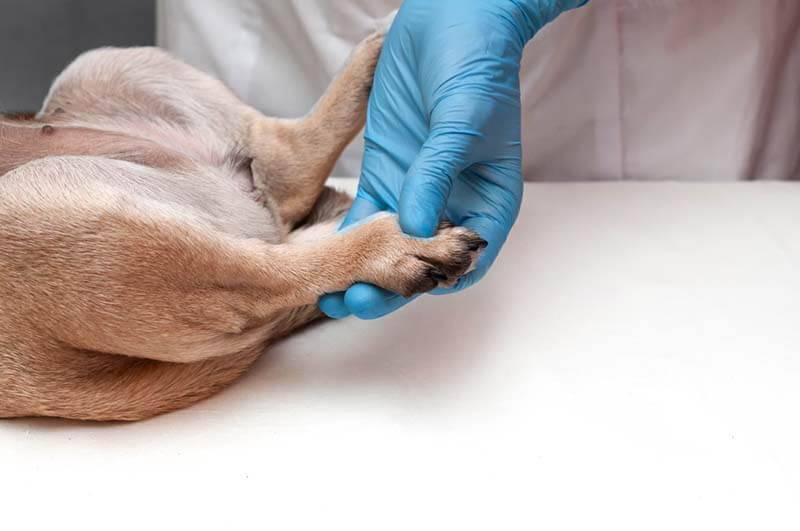
Treatment
Hypothermia, which has arisen due to a decrease in ambient temperature, is stopped with heat. It is important to remember that the patient should not be heated abruptly. If the dog is wet, it urgently needs to be dried, wrapped in something warm and dry, placed in a comfortable room. You can drink or feed warm food. In no case should you warm it up sharply, pour hot water on it or use hot heating pads, hair dryers. If the dog got into a pond far from home and is very cold, then it is important to move in as actively as possible, this will increase the chance of maintaining health.
If the decrease in temperature occurred against the background of general weakness, a drop in pressure, then droppers, injection of drugs, and a therapeutic diet can be used.
Doctors use non-steroidal anti-inflammatory, hormonal drugs to reduce the dog’s elevated body temperature. Sometimes an infusion (dropper) of cool solutions is performed. In any case, you need to figure out what caused the temperature to rise. If the condition is associated with infection, intoxication or pain, then the main treatment will be aimed at stopping this problem, and trembling and fever will pass as a result.
Muscle fatigue is treated with massage, rest, stretching, light repetitive exercise, free swimming.
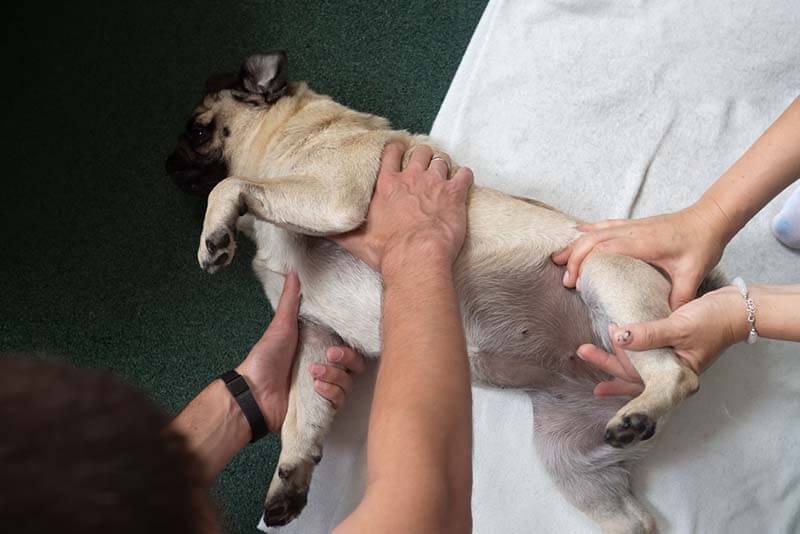
Itching in dogs, in the vast majority of cases, is associated with flea allergy dermatitis and resolves with proper deworming. It must be remembered that it is not enough to treat the dog from fleas with drops or a tablet, it is also important to correctly treat the room where the dog is kept. Such treatment includes mechanical washing of all surfaces, washing at high temperatures or steaming textiles, the use of insecticides.
In addition to parasitosis, itching can be caused by food allergies, inflammatory skin diseases, and autoimmune reactions. Each of these conditions requires specific treatment in the clinic after research.
To stop a sudden hypoglycemia (drop in blood sugar), dilute a thick sugar syrup and give it to your dog to drink. You can instead apply honey to the oral mucosa. But the drop in calcium levels cannot be stopped at home, because the best way to administer it is intravenous. So the best decision is to immediately go to the veterinary clinic.
Prevention
Prevention of a situation in which the dog’s hind legs twitch will be measures to ensure the quality of the dog’s maintenance:
Competently composed diet and diet, taking into account the current physiological state of the pet. For example, small breed puppies should be fed frequently and in small portions to prevent hypoglycemia, and a pregnant or lactating bitch should receive more calcium in the diet.
Providing a pet with physical activity that is adequate for him at the moment. For example, puppies should be protected from prolonged exercise, all dogs are not recommended for long-term movement on hard ground (for example, running after a bicycle on asphalt), old and overweight dogs must be gently forced to move. Dogs in training should receive a dosed load, there should not be abrupt breaks or an increase in the intensity of training.
Vaccination is the prevention of common diseases.
Treatment from external parasites (fleas, ticks) will help to avoid the appearance of itching caused by them and blood parasitic infections.
Deworming is extremely important for the prevention of intoxication caused by helminth infections.
Hypomyelinogenesis can only be prevented by the breeder, testing the producers and not allowing the carriers of the disease to mate with each other.
Training. Injuries are less likely to occur with well-mannered dogs that walk on a leash in the city.
Neoplasms in the brain, unfortunately, cannot be prevented.
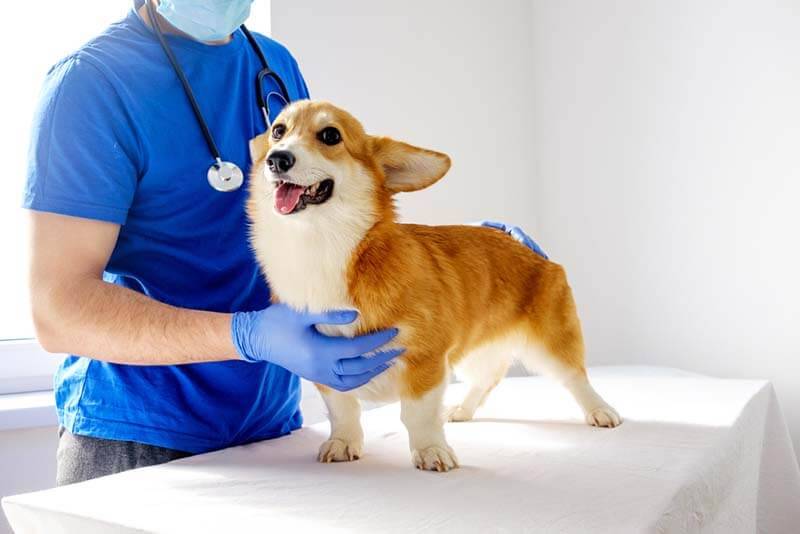
The dog’s hind legs are trembling – the main thing
If your dog’s hind legs are trembling, this may be quite normal. It is necessary to check whether her basic physiological needs are realized (whether she is cold, does not tolerate urination or defecation).
If the dog is agitated, the tremor may be normal (eg, intense sexual arousal or fear). It is better, of course, to avoid such situations.
If the dog is calm and his basic needs are met, but the tremor persists, this is a direct indication that a visit to the veterinarian is necessary.
If there are additional symptoms in addition to the tremor of the hind limbs (lethargy, refusal to eat, vomiting, diarrhea, cough, or other systemic symptoms), then immediately visit a doctor.
Answers to frequently asked questions



